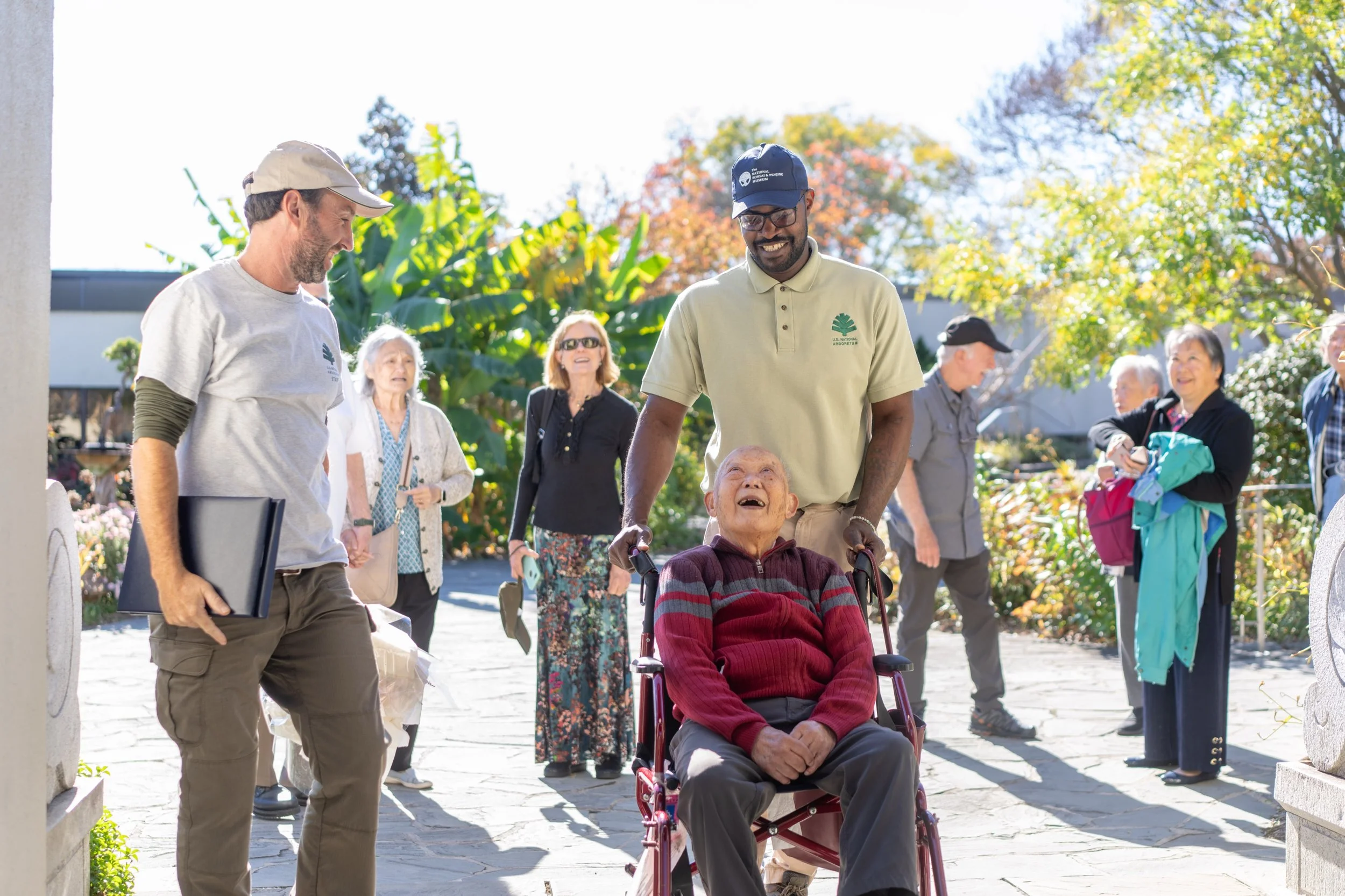As a photographer who now makes a living snapping pictures of some of the world’s most influential figures, Stephen Voss didn’t always know that photography could be more than a hobby. Once a bonsai novice, he certainly didn’t think he would publish a photography book of bonsai.
Now that he’s an accomplished photographer, Voss wants to share his “tricks of the bonsai photography trade.” This entry is part of his regular guest blog series, “Photographing Bonsai with Stephen Voss"," published on NBF’s blog, covering everything from lighting, angles and mindset needed when photographing the trees. Sign up for our newsletter and follow us on Facebook and Instagram to never miss one of his entries! Read his last entry here.
I’ve been researching the work of an early nature photographer named Eliot Porter for the photography newsletter I write. Porter was one of the first nature photographers to use color film and a contemporary of Ansel Adams, a renowned photographer and conservationist. But Porter’s work did not feature the bold colors and blazing sunsets of today’s nature photographers. Instead, he sought subtlety and interrelationships of color and form.
Later in his career, Porter read James Gleick’s “Chaos: Making a New Science,” recognizing in the text the scientific theory that had guided his career and visual thinking. He then published “Nature’s Chaos,” a collection of photographs from the natural world, which sought to reconcile his work and these scientific ideas. In the introduction, he explains this idea:
Although subjects such as mosses, lichens or leaves that have just fallen are not orderly at all, when viewed as detailed sections, they become orderly. This process suggests a tension between order and chaos. When I photograph, I see the arrangement that looks orderly, but when you consider the subjects as a whole or on a larger scale, they appear disorderly. Only in fragments of the whole is nature’s order apparent.
Where this gets interesting to me is with bonsai, which are, to varying degrees, sculpted by the human hand and meant to be seen as a wholly arranged object. A bonsai master guides the trees on a path to order, but it’s an ever-evolving relationship that may take unexpected turns. Much of my bonsai photography is a search for order, picking out the most aesthetically pleasing parts of a tree while trying to acknowledge and appreciate the basic chaos ever-present in the nature world.
So how does one find visual order when photographing bonsai? To demonstrate, I’ll use some photographs of this beautiful Japanese Beech that has been in training since 1945 and was donated to the Museum by Kiyoshi Kawamata.
My first image of the tree looks like this:
Here we see a beautiful forest-style planting with at least 16 individual trees (and a young Museum visitor in the background).
To find order, we’re going to use all of the tools of photography that are at our disposal. This includes available light, exposure, lens choice and depth of field.
Now Here’s a first attempt at bringing some order to this image. I decreased the exposure so the background would darken. This helps the grayish-white branches to stand out more.
I also recomposed the image. Notice how more of the individual branches are now isolated against the dark background? I’ve circled those gaps here in red. Our brains are designed to look for contrast, to delineate based on light and dark tones. By darkening the image and composing it to allow more of the branches to stand out, I’ve already introduced a bit of order and made a more visually interesting photo.
Let’s take it a step further. I’ve changed to a longer lens for this image (180mm macro) and lowered my tripod. In this image, the tree trunk that’s slightly off-center is the main focus:
As I continue perusing the tree, I see some younger branches that are growing off to the right side of the pot. Using low depth of field, I’m able to isolate them against the soil at the bottom of the pot.
Here’s my first image:
But I’m wondering if there would be a more visually impactful way to show the beautiful curve of this branch. By recomposing so that the branches are seen against the black platform the trees rest on, it stands out even more, as seen here:
I’m not sure which of these images I like more. But trying out ideas is important when you’re taking photographs, not making too many judgments in the moment, knowing that you’ll be able to review the images later and determine what was successful.
Thanks for following along. I hope you all are staying safe and healthy. While the Museum may be closed, you can use the ideas I talked about here on gardens, trees and even houseplants. Learning to see order in the chaos of nature allows you to bring a new visual acuity to your photographs.
























